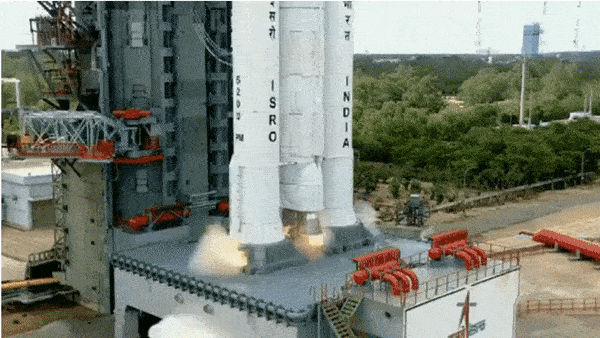Chandrayaan-3 Introduction: India’s space agency, the Indian Space Research Organization (ISRO), is preparing for another remarkable lunar mission with Chandrayaan-3. Following the success of Chandrayaan-2, this upcoming mission aims to achieve a soft landing on the Moon, conducting vital scientific experiments to deepen our understanding of our celestial neighbor. Join us on a fascinating journey through Chandrayaan-3’s mission.
1. Objectives of Chandrayaan-3
Chandrayaan-3 sets ambitious goals to expand our knowledge of the Moon. Its primary objectives include studying the lunar surface, analyzing mineral composition, investigating the presence of water ice, and examining the Moon’s exosphere. Through advanced instruments and cutting-edge technology, Chandrayaan-3 aims to enhance our understanding of the Moon’s geological history, its formation, and the processes that shaped its surface. This valuable information contributes to the global scientific community’s collective understanding of the Moon’s significance within our solar system.
2. Timeline and Technological Advancements for Chandrayaan-3
The journey of Chandrayaan-3 encompasses crucial stages integral to the mission’s success. The spacecraft undergoes meticulous planning and engineering to withstand the Moon’s harsh environment. Rigorous testing ensures its functionality and durability under extreme temperatures, radiation, and vacuum conditions.
Chandrayaan-3 utilizes the Geosynchronous Satellite Launch Vehicle Mk III (GSLV Mk III) as its carrier, showcasing India’s technological prowess in executing complex space missions. The spacecraft incorporates state-of-the-art instruments, including high-resolution cameras, spectrometers, and cutting-edge sensors. These advanced tools facilitate detailed observations, precise data collection, and thorough analysis of the Moon’s surface, water molecules, lunar geology, and topography.
3. Overcoming Challenges for Chandrayaan-3
Developing a lunar mission of this magnitude presents various challenges. ISRO addresses these challenges through strategic planning, technological innovations, and collaborative efforts.
One of the key challenges lies in designing a spacecraft capable of enduring the Moon’s inhospitable conditions. Extreme temperature fluctuations, vacuum, and radiation pose significant engineering hurdles. ISRO’s team of scientists and engineers work tirelessly to ensure the spacecraft’s resilience and longevity under these challenging circumstances.
Budgetary considerations also play a crucial role in mission development. Balancing the allocation of resources while maintaining a high level of scientific and technological excellence demands careful planning and optimization. ISRO consistently endeavors to achieve the desired objectives within the available budget, showcasing their commitment to cost-effective space exploration.
Technical complexities, such as navigation and trajectory calculations, demand precision and accuracy. Accurately plotting the spacecraft’s trajectory to ensure a successful lunar landing requires intricate calculations and simulations. ISRO’s expertise in orbital dynamics and mission planning plays a vital role in overcoming these challenges.
Collaboration with international space agencies is another integral aspect of mission development. ISRO actively engages in scientific and technical cooperation to leverage expertise, share resources, and enhance mission capabilities. Collaborative efforts bring together the brightest minds from around the world, fostering innovation, accelerating progress, and expanding the frontiers of space exploration.
4. Significance for India’s Space Exploration
Chandrayaan-3 represents a significant leap forward in India’s space exploration aspirations, solidifying its position in the global space community. Through collaborative efforts with international space agencies, India aims to expand scientific cooperation, share knowledge, and pave the way for future space exploration endeavors.
The successful execution of Chandrayaan-3 will contribute to India’s scientific and technological advancements, providing valuable data for researchers, educators, and space enthusiasts. The mission’s outcomes will enhance our understanding of the Moon’s evolution, its resources, and its potential for supporting future lunar exploration and colonization efforts.
Chandrayaan-3 also serves as an inspiration for India’s youth, fostering interest in science, technology, engineering, and mathematics (STEM) education. The mission ignites a sense of pride and patriotism, showcasing India’s capabilities in space exploration and its commitment to pushing the boundaries of scientific knowledge.
The mission’s success will further establish India as a key player in the global space industry, opening doors for future collaborations and joint missions. It will also contribute to India’s economic growth through advancements in technology, research, and innovation. The commercialization of space technologies developed during the mission can have far-reaching impacts on various sectors, further boosting India’s overall scientific and economic development.
Conclusion
As India prepares for the Chandrayaan-3 mission, anticipation and excitement continue to grow. This ambitious lunar mission promises to unlock new insights about the Moon’s mysteries, contribute to scientific research, and propel India’s space exploration endeavors to new heights. Chandrayaan-3 exemplifies ISRO’s dedication, technical expertise, and commitment to advancing humanity’s understanding of the cosmos. Join us as we witness India’s remarkable journey towards unraveling the lunar enigma with Chandrayaan-3.


1 thought on “Exploring the Journey of Chandrayaan-3: India’s Ambitious Lunar Mission”